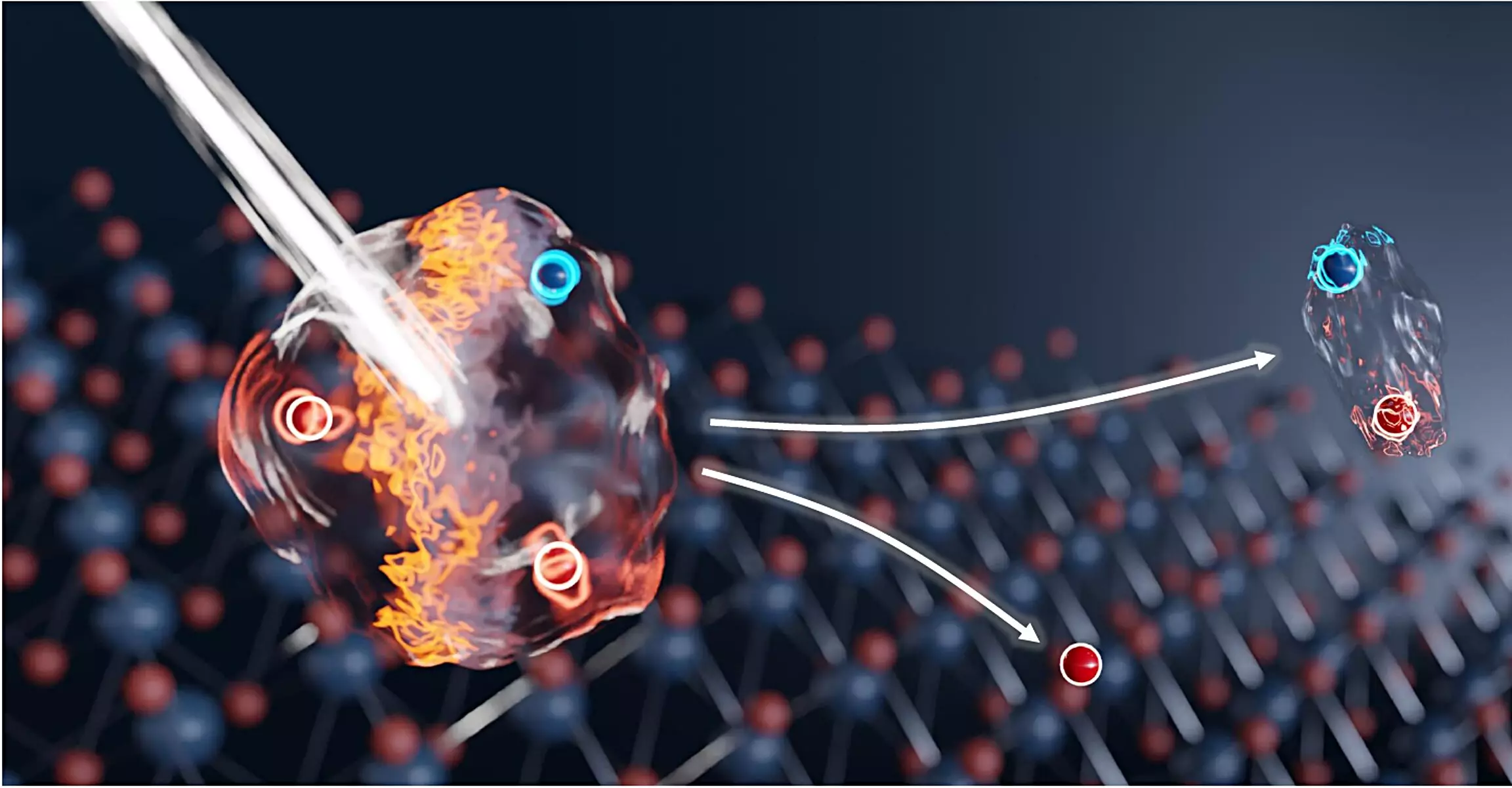The emergence of two-dimensional (2D) materials has sparked significant interest within the scientific community, particularly due to their unique properties that differ immensely from their bulk counterparts. Researchers are exploring applications ranging from advanced electronics to quantum computing, with these atomically thin structures at the forefront of technological innovation. The recent collaboration involving TU Dresden and the Helmholtz-Zentrum Dresden-Rossendorf (HZDR) showcases groundbreaking work that accelerates the processes vital for utilizing these materials in real-world applications.
Central to the findings of this collaborative research is the role of excitons and trions, which are emerging as critical components in the functioning of two-dimensional semiconductors. An exciton is formed when an energized electron leaves its original position, resulting in a positively charged hole. This electron-hole pair can exist in a delicate balance, with the mutual attraction allowing the formation of excitons. Moreover, under suitable conditions, a trion can form when an additional electron is introduced into the existing exciton pair, fostering a three-particle complex. The distinct advantage of trions is their electric charge combined with an impressive capability for light emission, rendering them potential candidates for manipulating electronic and optical systems simultaneously.
Despite prior achievements in switching between exciton and trion states, the process was hampered by sluggish switching speeds, limiting potential applications. However, the recent study led by Prof. Alexey Chernikov has effectively developed a method that significantly enhances this switching capability. Utilizing intense terahertz pulses from the specialized FELBE free-electron laser facility, the researchers illuminated a thin layer of molybdenum diselenide at cryogenic temperatures. This innovative approach not only led to exciton formation but also demonstrated an extraordinary ability to convert these excitons back into trions at an unprecedented speed.
The rapid switching demonstrated, within the realm of picoseconds (trillionths of a second), marks a quantum leap in the ability to manipulate these states. This speed is notably almost a thousand times faster than previously recorded electronic methods, signaling a major advancement in the field. Winning this temporal race is not merely a scientific curiosity; it lays down the groundwork for on-demand activation of these processes, essential for future applications in flexible electronics and novel computing architectures.
The implications of this research extend far beyond mere academic interest. By being able to modulate the states of excitons and trions swiftly, researchers are now looking into applications for optical data processing and flexible detectors. Such advancements may enable the design of sophisticated modulators with rapid switching capabilities, streamlining the integration of electronic systems with optical data streams.
Additionally, there is a promising avenue for developing terahertz detectors. The ability to switch between excitonic states could lead to the creation of terahertz cameras equipped with a high pixel count, effectively improving imaging technologies. This capability may allow for the detection of weak terahertz radiation, making it accessible for a broader range of applications, including telecommunications and sensor technology.
Of equal importance is the potential for exploring complex electronic states and novel quantum phenomena stemming from intense particle interactions. This bodes well for research in the field, as scientists may soon uncover new states of matter or advanced functionalities that were previously unattainable. As this research progresses, focusing on room-temperature applications will undeniably unlock further possibilities, making these technologies not just theoretical but practically viable.
The advancements unveiled by the interdisciplinary collaboration signify a remarkable stride toward employing two-dimensional materials in practical applications. The ability to rapidly switch between excitons and trions opens up a multitude of future paths that could redefine how we interact with optical and electronic systems. Combining compact components with new functionalities has the potential to launch us into a new era of technology, firmly rooted in the principles of quantum mechanics. The implications are vast, and as further studies emerge, the dynamic landscape of quantum materials will undoubtedly continue to evolve.

